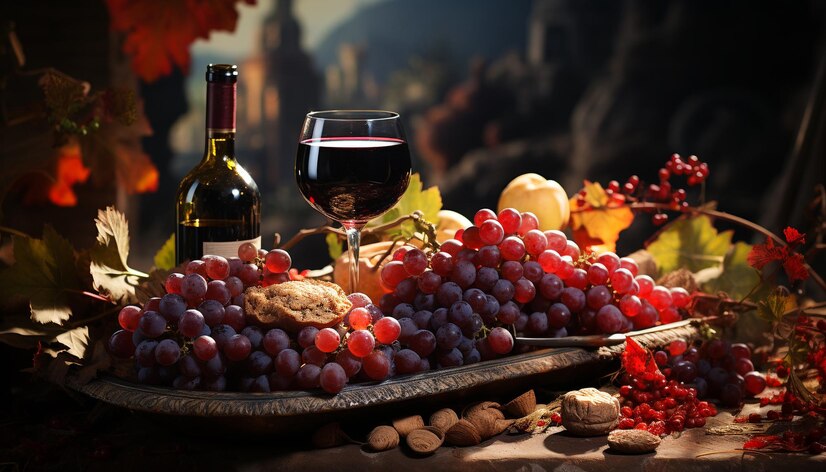Step into the world of Paul Masson wines, where every sip tells a story rich in history and tradition. From its humble beginnings to its evolution through various ownership transitions, the journey of Paul Masson wines is as captivating as the flavors that grace each bottle. Join us on a taste-filled adventure as we explore the origins and development of this iconic wine brand.
History of Paul Masson Wines
In the late 19th century, Paul Masson, a French immigrant with a passion for winemaking, laid the foundation for what would become a celebrated wine legacy. Settling in California’s Santa Clara Valley, Masson planted vineyards and crafted wines that soon gained recognition for their exceptional quality.
With an unwavering commitment to tradition and craftsmanship, Paul Masson Wines grew in popularity over the decades. The brand became synonymous with elegance and sophistication, attracting connoisseurs and wine enthusiasts alike.
Throughout its history, Paul Masson Wines has continued to uphold its founder’s vision of producing wines that reflect the unique terroir of California while staying true to Old World winemaking techniques. This dedication to excellence has solidified Paul Masson as a respected name in the world of fine wines.
Evolution of Paul Masson Wines
In the world of winemaking, Paul Masson Wines have a rich history that spans over a century. From its humble beginnings in California in the late 1800s to becoming a household name known for quality wines, the evolution of Paul Masson is truly remarkable.
Over the years, Paul Masson has continued to innovate and refine its winemaking techniques, staying true to its commitment to producing exceptional wines. With each passing decade, new varietals were introduced, catering to changing consumer preferences and tastes.
The brand’s dedication to quality and craftsmanship has been evident throughout its evolution. By incorporating modern technology while still honoring traditional winemaking practices, Paul Masson has managed to stay relevant and competitive in an ever-evolving industry.
Today, as one of the most recognizable names in American winemaking, Paul Masson continues to uphold its legacy of excellence by offering a diverse range of high-quality wines that appeal to wine enthusiasts worldwide.
Ownership Transitions:
Paul Masson wines have seen various ownership transitions throughout its long history, each contributing to the brand’s legacy.
From Martin Ray’s stewardship in the 1930s and early 1940s to Seagram Company taking over until the late 1980s, different hands guided the direction of these renowned wines.
Vintners International continued the journey for a few years before Centera and later Constellation Brands carried on with their own unique vision. In more recent times, Wine Group LLC acquired both the wines and winery, while E. & J. Gallo took over the brandies division.
These shifts in ownership brought new ideas, innovations, and opportunities for Paul Masson Wines to evolve while staying true to their rich heritage.
Martin Ray (1936–42)
In the late 1930s, a pivotal moment in the history of Paul Masson Wines occurred with the ownership transition to Martin Ray. His tenure from 1936 to 1942 marked a period of innovation and refinement for the winery.
Martin Ray brought a fresh perspective and dedication to quality winemaking, elevating Paul Masson’s reputation within the industry. Under his guidance, new techniques were introduced, pushing boundaries and setting new standards for California wines.
Ray’s passion for crafting exceptional wines was evident in every bottle bearing the Paul Masson name during his stewardship. The legacy he left behind continues to influence the brand today as a testament to his expertise and commitment to excellence.
The brief yet impactful era under Martin Ray laid down foundational elements that would shape Paul Masson Wines’ trajectory for years to come.
Seagram Company (1942–87)
In 1942, the Seagram Company stepped into the world of Paul Masson Wines, bringing a new era of ownership and influence to the vineyards. Under Seagram’s leadership, the brand continued to grow and evolve, gaining recognition for its quality wines.
During their ownership from 1942 to 1987, Seagram Company brought their expertise in spirits and beverages to further elevate Paul Masson’s reputation in the industry. The partnership between Seagram and Paul Masson Wines marked a significant period of expansion and innovation for the brand.
With Seagram at the helm, Paul Masson Wines thrived as it gained popularity among wine enthusiasts worldwide. This era was characterized by strategic decisions that solidified Paul Masson’s position as a respected player in the wine market.
The years under Seagram Company’s ownership were pivotal in shaping the future trajectory of Paul Masson Wines, setting the stage for what was yet to come in its storied history.
Vintners International (1987–93)
In 1987, Vintners International took the reins of Paul Masson Wines, ushering in a new chapter for this esteemed winery. Under their stewardship, the brand continued to evolve and thrive within the ever-changing landscape of the wine industry.
During this period, Vintners International brought fresh perspectives and innovative strategies to elevate Paul Masson’s reputation as a producer of quality wines. With a focus on tradition fused with modern techniques, they sought to captivate both loyal customers and newcomers alike.
Through strategic marketing campaigns and investment in vineyard practices, Vintners International aimed to position Paul Masson as a frontrunner in the competitive world of winemaking. Their dedication to excellence laid a solid foundation for future growth and success for this iconic brand.
Centera (1993–2021); renamed Constellation Brands from 2000
Centera played a pivotal role in the evolution of Paul Masson Wines, taking over ownership in 1993 and rebranding as Constellation Brands in 2000. This transition marked a significant chapter in the history of the renowned winery.
Under Centera’s stewardship, PaulMasson Wines continued to thrive and solidify its reputation for producing high-quality wines that delighted connoisseurs around the world. The brand saw expansion and innovation during this period, further establishing itself as a leader in the industry.
The renaming to Constellation Brands reflected a new era of growth and development for PaulMasson Wines, aligning it with one of the most respected names in the wine and spirits business. The move highlighted a commitment to excellence and sustainability that has been synonymous with both Centera and Constellation Brands.
This phase set the stage for future success and laid a strong foundation for the legacy that continues to endure today under different ownership.
Divestment of the wines and winery to Wine Group LLC (2008–18)
In 2008, a shift in ownership marked a new chapter for PaulMasson Wines. The winery and its wines were divested to Wine Group LLC, setting the stage for further evolution. This transition brought fresh perspectives and strategies to the brand, infusing it with renewed energy.
Under the stewardship of Wine Group LLC from 2008 to 2018, PaulMasson Wines underwent subtle yet significant changes. The focus on quality and innovation remained at the core of their operations as they navigated through a dynamic wine market landscape.
During these years, strategic decisions were made to position PaulMasson Wines for continued success in an ever-changing industry. While honoring tradition, there was also a drive towards modernization and adaptability that ensured the brand stayed relevant among consumers.
The divestment to Wine Group LLC marked a pivotal moment in the history of PaulMasson Wines – one that laid the groundwork for future growth and opportunities.
Sale of the brandies to E. & J. Gallo (2021–present)
In 2021, a significant development unfolded in the story of PaulMasson Wines— the sale of their brandies to E. & J. Gallo. This move marked a new chapter for the renowned brand, as ownership transitioned hands once again.
E. & J. Gallo’s acquisition brought with it a promise to uphold the legacy and quality that Paul Masson is known for, while also injecting fresh perspectives and expertise into the mix.
With a rich history behind both brands, this collaboration opens up possibilities for innovative creations and continued excellence in winemaking.
As we look towards the future, it will be intriguing to see how this partnership unfolds and what exciting ventures may lie ahead for these esteemed labels within the industry landscape.
Conclusion
PaulMasson Wines holds a rich history that spans over a century, beginning with the vision of its founder, Paul Masson. From humble beginnings in California’s Santa Clara Valley to becoming an iconic name in the wine industry, the brand has evolved while staying true to its commitment to quality and craftsmanship.
Through various ownership transitions, including Martin Ray, Seagram Company, Vintners International, Constellation Brands (formerly known as Centera), and now under new management with Wine Group LLC and E. & J. Gallo handling different aspects of the business – PaulMasson Wines continues to thrive and adapt to changing times.
As we raise our glasses to toast this enduring legacy, let us savor each sip of Paul Masson wine or brandy knowing that we are tasting not just a beverage but a piece of history crafted with passion and dedication. Cheers to the past, present, and future of Paul Masson – here’s to many more years of excellence in winemaking!










